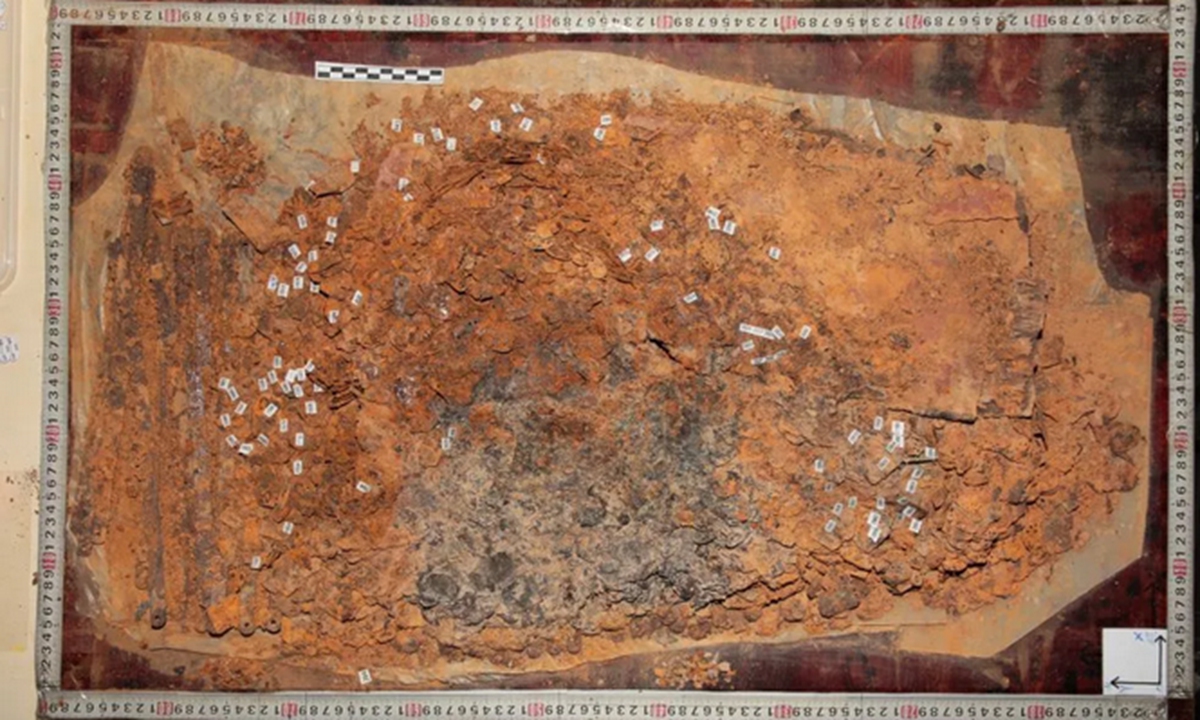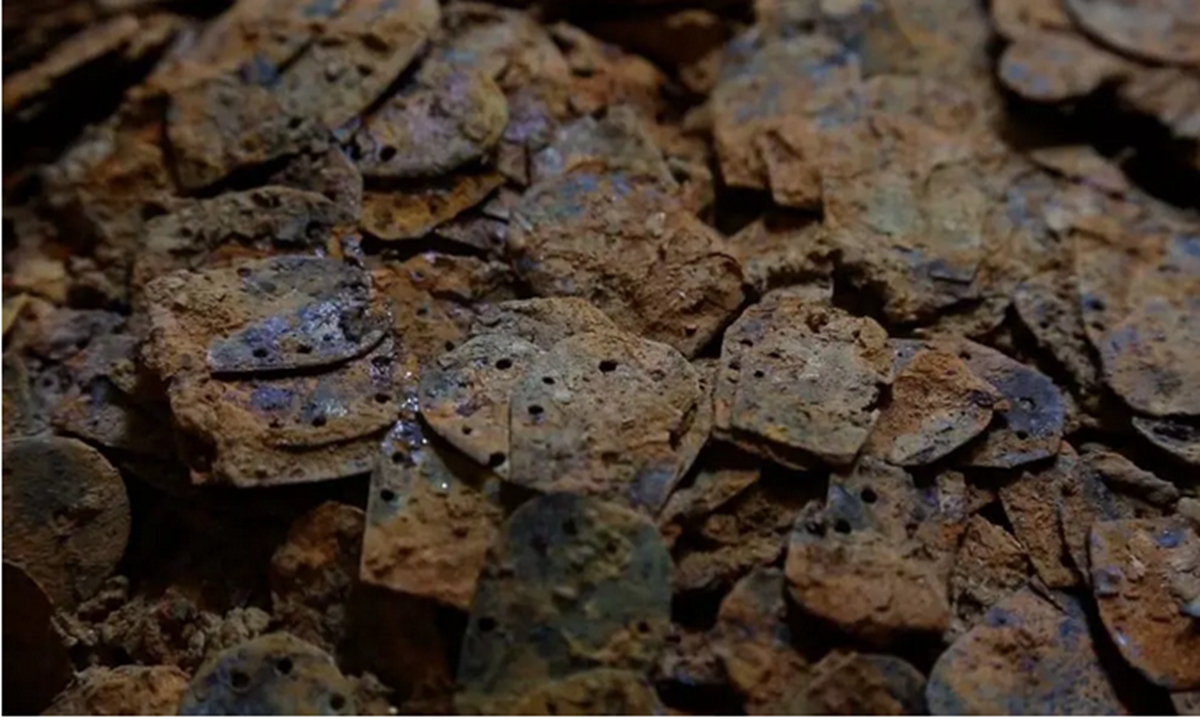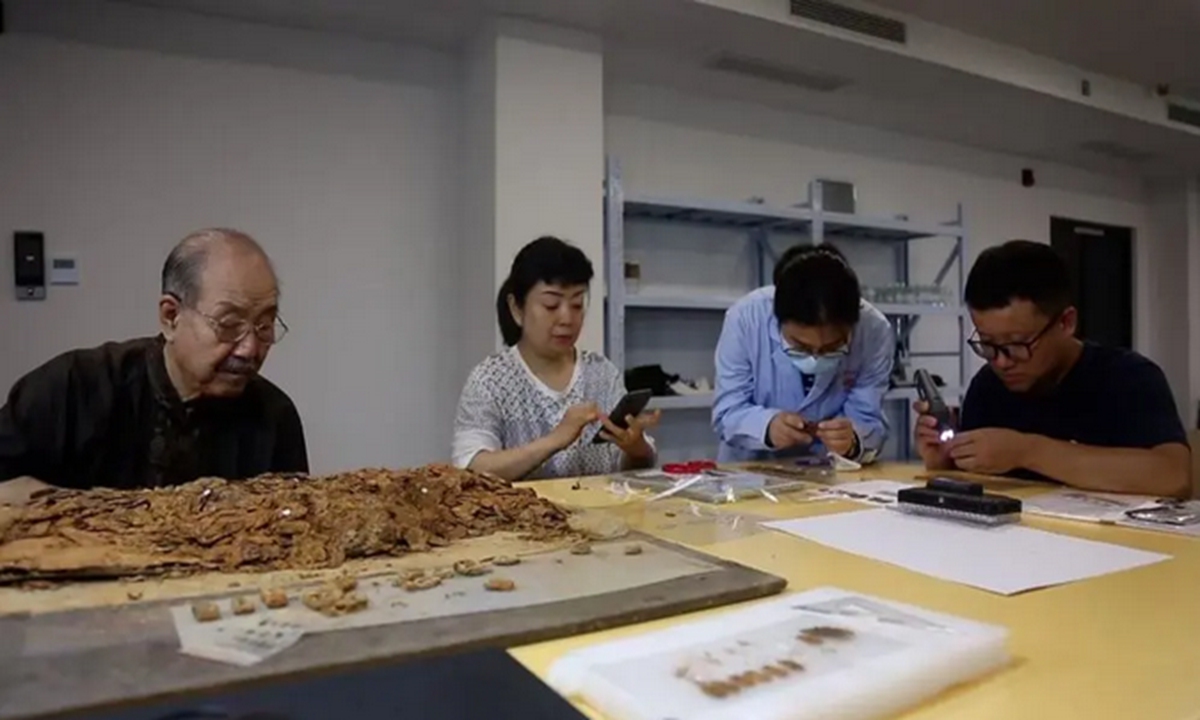
Armor pieces from the tomb of the Marquis Haihun Photos: Courtesy of Jiangxi Provincial Institute of Cultural Relics and Archaeology
A fish-scaled armor was recently found in the #tomb of Liu He, the Marquis of Haihun, dating back to the Western Han Dynasty (206BC-AD25). The armor's smallest piece is 1 centimeter wide and about 0.2 centimeters thick. Following a preliminary restoration study, experts said that the armor was crafted by using iron-lacquered, bronze-lacquered, and leather-lacquered materials. This detail indicates that the technology used in armor-making during the Han Dynasty period had achieved a very high level of excellence, the Xinhua News Agency reported on Saturday.
Yang Jun, a research fellow of Jiangxi Provincial Institute of Cultural Relics and Archaeology, told Xinhua that these armor pieces were found in the tomb of the Liu He in the west part of the outer coffin, where weaponry was installed.
Yang, who is the leader of the excavation team at the tomb of the Marquis of Haihun, said that the fish-scaled armor pieces were unearthed along with swords. Based on the traces of patent leather on site, it has been inferred that the items were packed in lacquer boxes.
However, when the tomb was unearthed, it was discovered that the lacquer boxes had rotted, and the armor and swords appeared piled up.

The armor pieces unearthed from the tomb of the Marquis of Haihun
"The tomb is known to have undergone earthquakes and the rising groundwater level caused by the intrusion of the Poyang Lake, China's largest freshwater lake. The burial environment has made the armor pieces thin and fragile," explained Yang. The team decided to box up the cultural relics and carry out conservation researches through laboratory archaeology thereafter.
It took archaeologists two years to extract about 6,000 armor pieces from the boxes. After preliminary restoration research, the cultural conservation team involved said the armor was crafted by using iron-lacquered, bronze-lacquered, and leather-lacquered materials.

Armor restoration expert Bai Rongjin (first from left) observes the armor pieces unearthed from tomb of the Marquis of Haihun
Bai Rongjin, a research fellow with the Institute of Archaeology, Chinese Academy of Social Sciences, said that "the smallest armor piece was only 1 centimeter wide and 0.2 centimeters thick."
Bai, who has worked in the armor restoration for more than five decades, said that the fish-scaled armor pieces were mostly unearthed from tombs dating back to the Han Dynasty.
Usually, armor pieces measure between 4-10 centimeters. Even the exquisite iron armors pieces unearthed from the Western Han (206 BC-25 AD) tombs of Prince Liu Sheng, measured 2-3 centimeters in width. The presence of smaller armor pieces indicates that more armor pieces were needed to make the armor, and that the forging process was a more refined one, explained Bai.
He also analyzed the uniqueness of the materials and style of these armor pieces. In general, Han Dynasty armors were made of one single material, however, the fish-scaled armor found in tomb of the Marquis of Haihun was made of iron, copper, and leather. This is the first time that such a composite design has been found to date back to the Han Dynasty period.
Experts noted that given armors' importance on the battlefield, techniques in armor-making have been evolving for thousands of years. This new discovery in the tomb of the Marquis of Haihun has provided important research materials for archaeologists.






